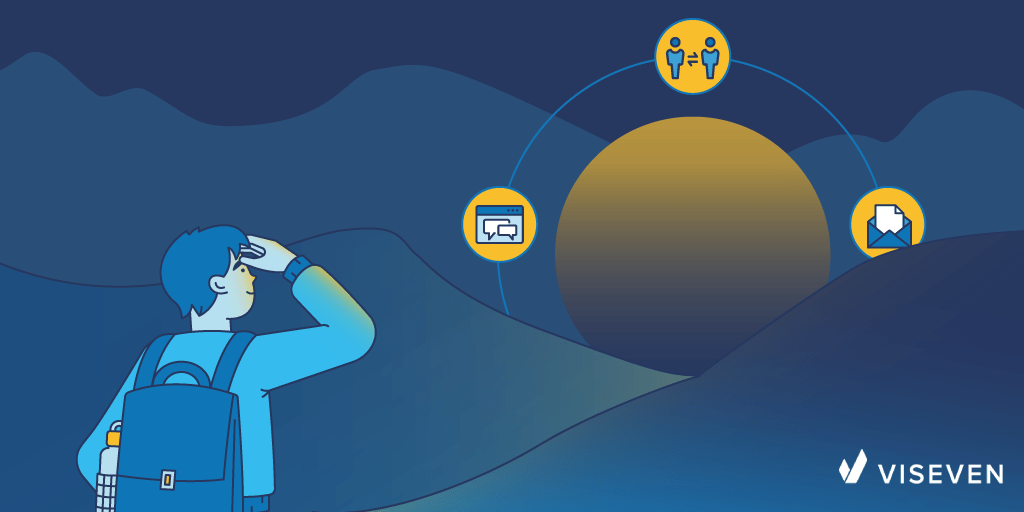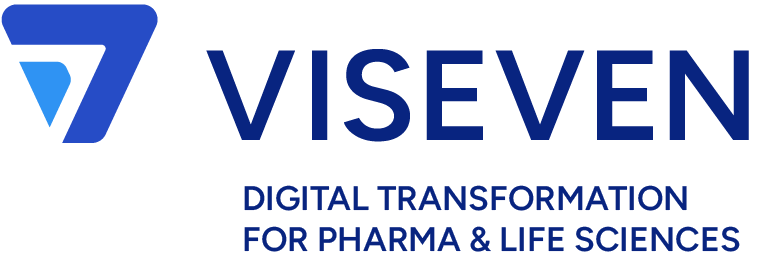The Horizons of Omnichannel Excellence in Life Sciences

COVID-19 has shaped a new type of customer. In retail, we have greatly changed our buying habits, evolving from a customer who opt in-store purchases to a customer who questions in-store experience if there is no apparent reason for this. The same goes for HCPs and patients who have rethought their interaction with healthcare providers in the same manner.
Thus emerges a new customer that pharma should take into consideration. Read on about promising innovations in omnichannel technologies that open up new horizons to satisfy the needs the new type of post-covid customer.
The new stage in customer service
Think of a pandemic without all the technologies and capabilities that we enjoy these days. They didn’t make us forget about queues and trips to the store, however, we have to face how greatly they simplified our life in a pandemic. Now almost a half, 49% of consumers shop online more now than they did pre-COVID-19. Telemedicine, remote care, no queue for a cool t-shirt, and many other things – today seem to be obvious. But if a pandemic happened at least 20 years ago, everything might look different. A global crisis made us think about the horizons that technologies open up and what lies ahead.

What was the role of omnichannel technologies in a pandemic? A rapid transition to remote communication has turned all businesses, including healthcare, to reach new heights in omnichannel. Both doctors and patients have appreciated the benefits of digital engagement and will not give up on it in the near future. This has led to a significant shift in promotional value by channel.
Moreover, not only the channels have changed, under a growing pandemic pressure, the patients changed themselves. Thus, both post-covid patients and doctors share the same features and now want the same thing from interaction healthcare providers:


- To have an interconnected conversation with a healthcare provider
- Self-services and interaction that better fits into their schedule
- Interaction that complements face-to-face interaction
- To be able to better concentrate on information
- Have the information available online
- Actively participate in the process of treatment
- Mixed communication that includes as many channels as possible
This kind of communication, focused primarily on the desires and needs of pharma’s target audience today is fully covered by omnichannel. This is already working and will work long after the pandemic is over. Because now true customer experience isn’t meant to have as many channels and systems as possible – it replicates the HCP’s path in the real world.
Omnichannel technologies are offering that personal touch and taking into account all aspects of disease management. Thereby being relevant for a modern type of patient who no longer wants to surrender their health into the doctor’s hands but strives to actively participate in the process of treatment.
The question is…
What’s next?
Omnichannel technologies are progressing in leaps and bounds. Innovations are waiting just around the corner. AI and ML are already opening even greater horizons for patients and healthcare professionals. Therefore, we invite you to have a look at the list of the most recent innovations in omnichannel technologies. Some of them are already partially available, some can become a reality very soon.
Predictive analytics
In the nearest future it is expected that predictive analytics will be able to calculate the result of each customer interaction. For example, today the ML model is able to calculate the probability of engagement in different actions (open, click, unsubscribe, registration, engagement, web conversion, etc.). It means that soon enough there will be even more possibilities to engage each group of customers differently.
Thus, a med rep’s personal plan could not only show a visit to an HCP but actually calculate that right now, the impact would be higher when sending an email or vice versa.
AI-based web and email recommendations
Recently we reviewed Salesforce’s latest State of Service Report, there we found out that 46% of high-performing decision-makers say their teams use AI. Smart AI algorithms are able to choose the next best action, best send time, best channel during the whole customer’s journey. Thus, soon these algorithms will be able to suggest the manager the best time for a visit, email, etc.

It may also suggest semantic analysis of texts with recommendations on which words and phrases work best (primarily in topics and headings). For example, you can analyze email subject lines and uncover insights to craft the best message. With this module, you can find word and phrase combinations that would potentially drive better engagement. Using natural language processing, the model predicts how copy contributes to the engagement of messages.
Similarly, email recommendations can observe customer behavior to build preference profiles and deliver the next-best content or product via email.

Dynamic message formation
Dynamic content is now the whole world of personalized customer engagement in marketing. Substitution of the most suitable block, module, banner in messages individually for each subscriber can maximize the engagement. These technologies can dynamically restructure individual pages of the website depending on the visitor parameters (where they came from, what interests, whether they were before, what they have already viewed, etc.). Thus, for each identified visitor, the website looks as personalized as possible.
For example: With this technology, a doctor can prescribe a medication being armed with additional information about the dosage and use in certain groups of patients, benefits, or guidelines.
Automated creation of the customer journey
Omnichannel is opening new vistas. It means that no less exciting innovations are waiting for us just around the corner.
Earlier the creation of customer journey map could take a few weeks of work with manual tools to collect all the necessary information. In the nearest future, we expect to enjoy the automated formation of the entire journey individually for each subscriber depending on their behavior, characteristics and external factors. Through such a journey, each subscriber is assigned its own type of content, the best send-time, the optimal channel and type of communication. An ML model will monitor the engagement rate of each subscriber. If the communication load for the subscribers begins to increase, and their level of engagement decreases, the model makes recommendations for limiting. Then the only critical messages will be sent to this subscriber.
This will also include, automated adding/exclusion of subscribers to individual journey at a certain stage of the customer cycle.
Automated assets creation

Earlier to create a brief, a brand manager had to go through many time-consuming stages. From searching everything needed in the DAM system (pictures, pieces of approved texts, videos, etc.) to thinking over the structure, transferring to the agency, MLR approvals, and many more. Pharma will move beyond this as the soon modules will be ready to generate almost ready-made content, give it to MLR (and it will be many times faster) – and drastically reduce time for content creation. Automatic creation of assets will be available for different channels from the initial set of modules (text and a set of images at the input, email, message in messenger, web page, etc.).
A range of customer service evolves as rapidly as technologies. We at Viseven choose not just to keep pace with innovations but to create them here and now. If you want to know more about our expertise and innovations in omnichannel – book a meeting with our experts by filling out the form below.



